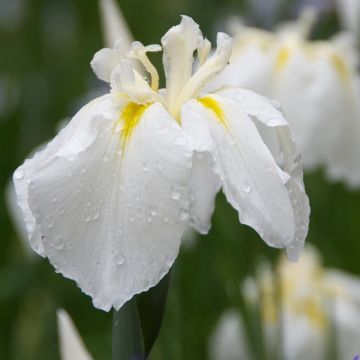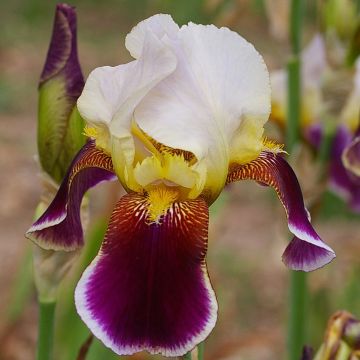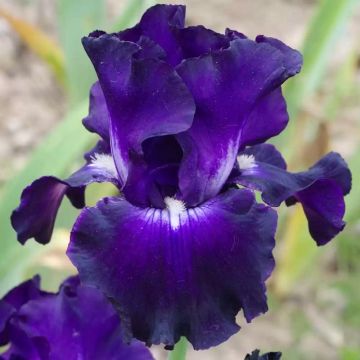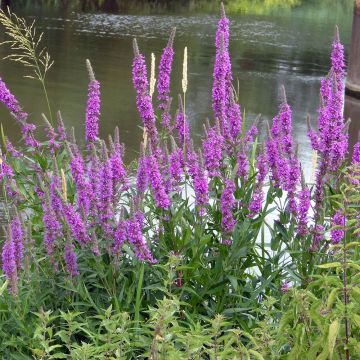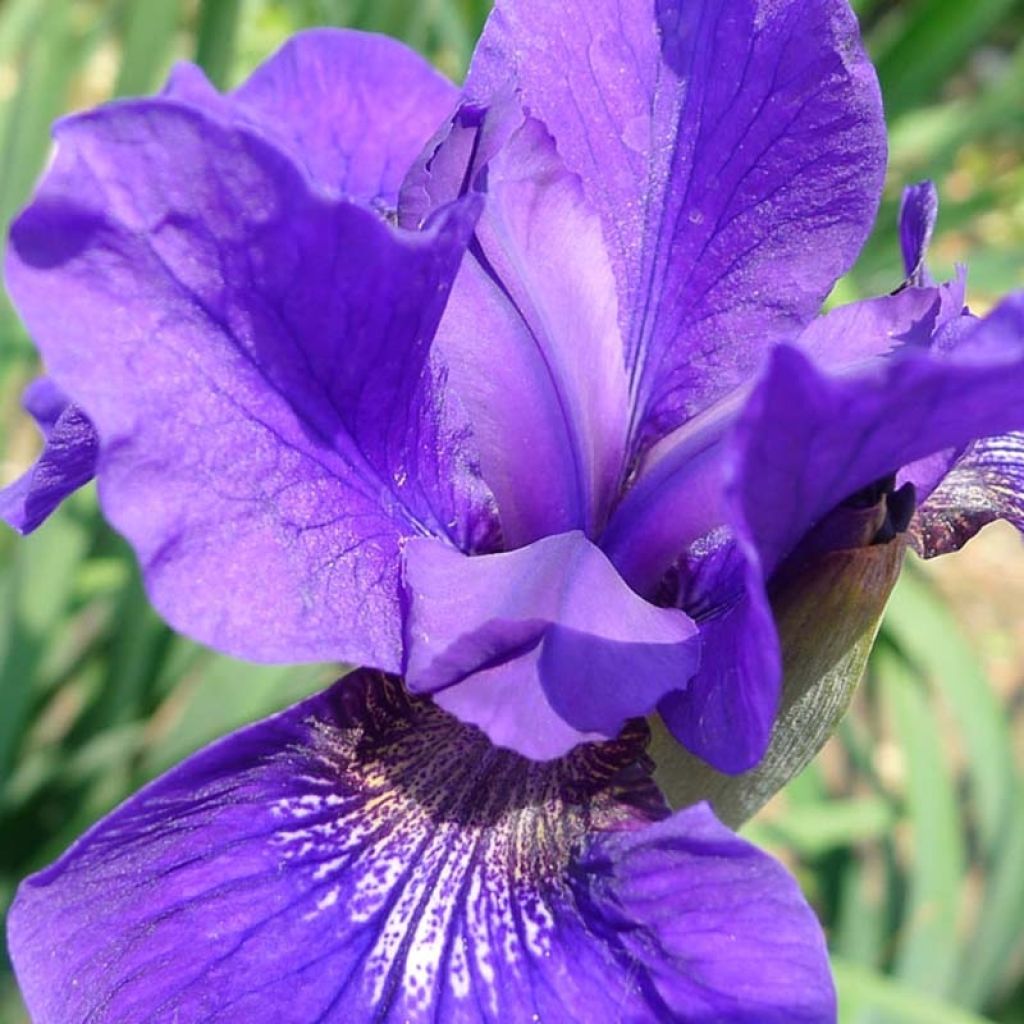

Iris sibirica Ruffled Velvet - Siberian Iris


Iris sibirica Ruffled Velvet - Siberian Iris
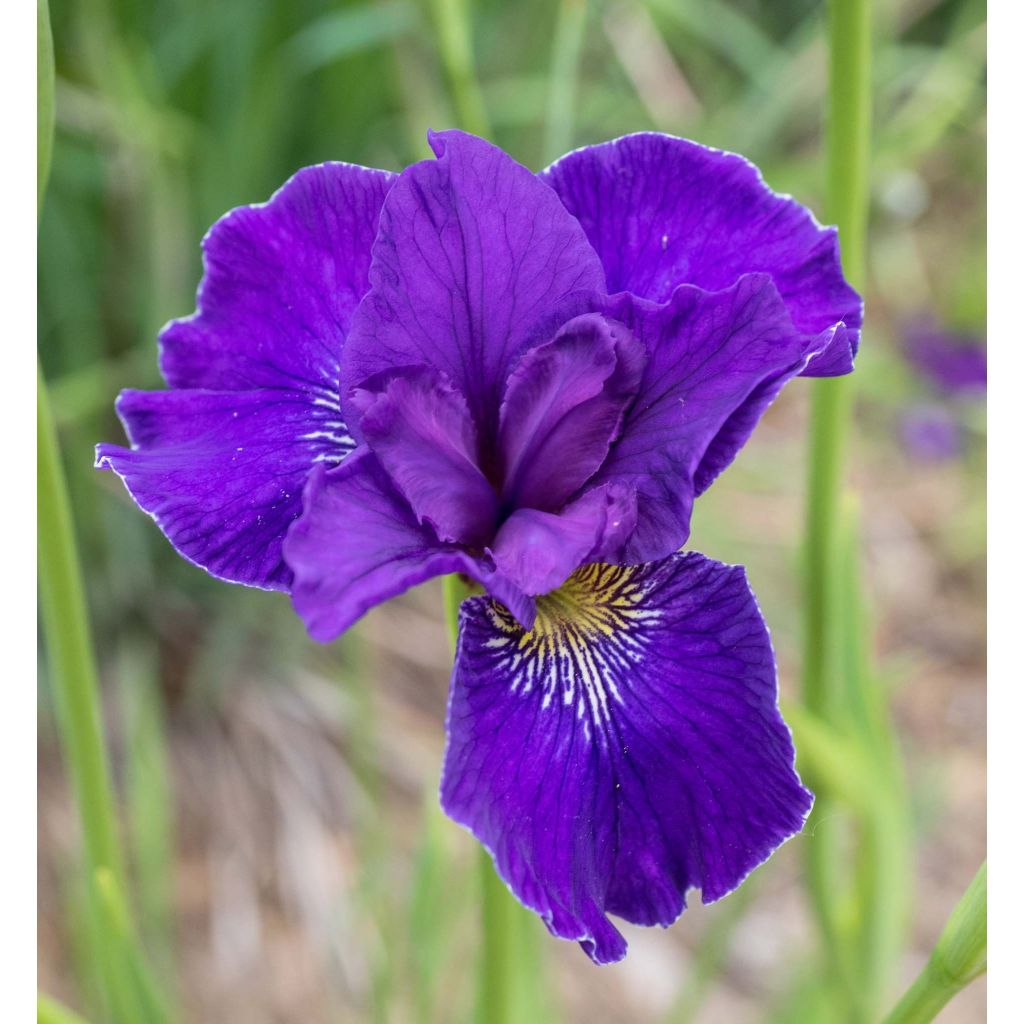

Iris sibirica Ruffled Velvet - Siberian Iris
Iris sibirica Ruffled Velvet - Siberian Iris
Iris sibirica Ruffled Velvet
Siberian Iris, Siberian Flag
This item cannot be shipped to the selected country
Delivery charge from €5.90
More information
Schedule delivery date,
and select date in basket
This plant carries a 12 months recovery warranty
More information
We guarantee the quality of our plants for a full growing cycle, and will replace at our expense any plant that fails to recover under normal climatic and planting conditions.
From €5.90 for pickup delivery and €6.90 for home delivery
Express home delivery from €8.90.
Does this plant fit my garden?
Set up your Plantfit profile →
Description
Iris sibirica 'Ruffled Velvet' is a very beautiful variety of Siberian iris, which has been awarded multiple times in the United States. Vigorous, compact, and floriferous, the plant produces superb flowers with undulate petals that have a velvety appearance, enhancing its deep blue-violet colour. A throat striped with pale-yellow to white adds a refined touch to this generous late spring flowering. Appreciated for their graceful flowers and finely upright foliage, Siberian irises are beautiful plants for moist soils, unlike their cousins, the German irises. They are also hardy and adaptable plants, thriving in good garden soil that remains moist in summer. Indispensable near water bodies, as long as the roots are not submerged in winter, they are perfectly suited for romantic, English, and even contemporary gardens.
The 'Ruffled Velvet' iris is a horticultural hybrid introduced by Mc Ewen in 1973 (USA). It was awarded by the American Iris Society in 1974 (Honourable Mention) and again in 1980 (Award of Merit). It belongs to the Iridaceae family and is included in the group of Siberian irises (sibiricae in Latin). Its ancestors come from Asia, specifically from marshy and sunny areas found in Russia, Mongolia, China, Japan, and Korea. It is an herbaceous perennial plant with a creeping and thick rhizome. Its above-ground vegetation disappears in winter.
It matures in 4 years, reaching approximately 70cm (28in) in height when flowering. From spring, it forms a dense clump of narrow, linear, upright leaves of a medium greyish-green colour. The flowering occurs in June-July. From the clump of leaves emerge hollow and ramified flower stems, slightly taller than the foliage. Each stem bears numerous floral buds, measuring 5 to 7cm (2 to 3in) in length and 1cm (0.4in) in width. The buds open into flowers with a diameter of 6 to 7cm (2 to 3in), composed of 3 large undulating drooping sepals surmounted by 3 smaller undulating upright inner petals. In the centre of the flower, there are 3 erect pistils resembling small fringed petals in a mauve-violet colour, covering 3 very discreet light-coloured stamens. The dominant colour is a deep blue-violet, with the sepals striped with pale-yellow, white, and very dark violet at the base. After pollination by insects, the flowers give way to fruits that are capsules containing seeds.
Siberian irises are wonderful plants for landscaping near water features. However, they are cultivated somewhat like Iris ensata and do not appreciate soils that are both waterlogged and frozen in winter. One solution is to plant them in pots that are submerged in spring and removed in autumn. This iris can be easily grown in good garden soil (preferably non-calcareous or enriched with turf) that remains moist all year round. Mix them together, combining different colours, or, for example, with Japanese primroses or feathery astilbes. Also consider pairing them with strands of Phalaris arundinacea 'Cote de Nacre', which are very tolerant, or with flowering rush (Butomus umbellatus).
Report an error about the product description
Iris sibirica Ruffled Velvet - Siberian Iris in pictures
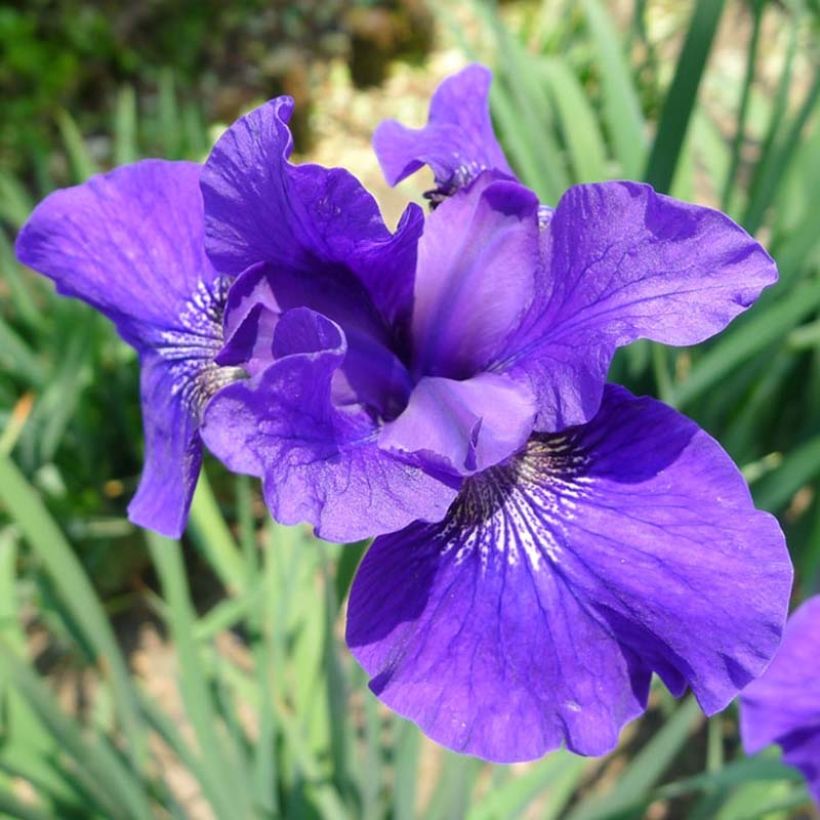

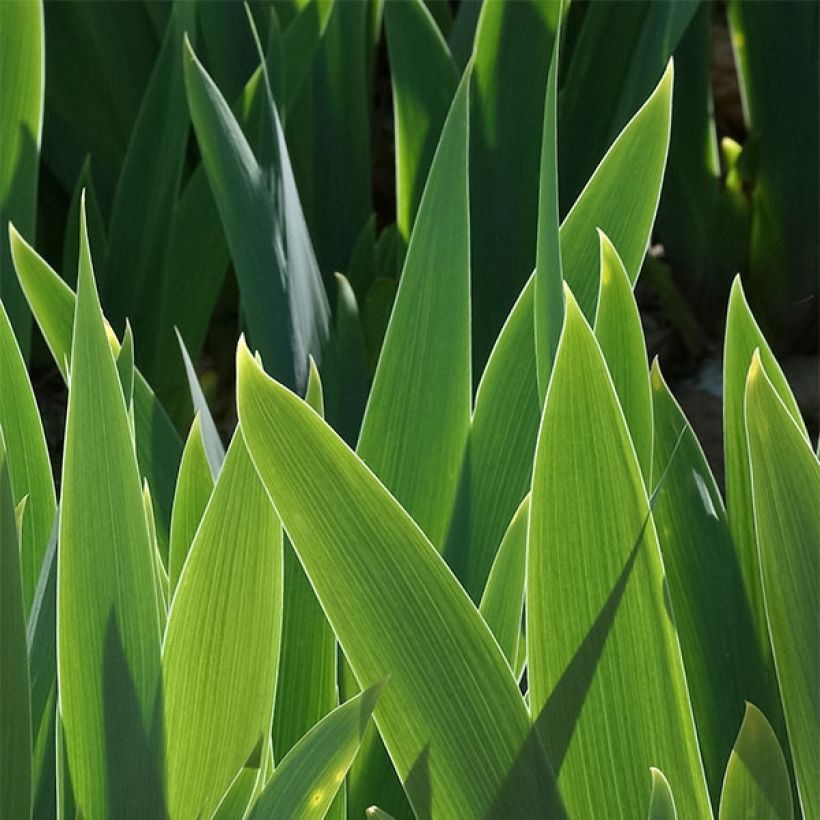

Flowering
Foliage
Plant habit
Botanical data
Iris
sibirica
Ruffled Velvet
Iridaceae
Siberian Iris, Siberian Flag
Cultivar or hybrid
Other Iris A to Z
Planting and care
Plant in rich, preferably non-calcareous (pH 4.5 to 7), rather clayey and peaty soil, in a sunny or semi-shaded position. The soil should remain moist even in summer: mulch with compost and water, if necessary, in summer. Siberian irises are somewhat like Iris ensata and do not appreciate soils that are both waterlogged and frozen in winter. One solution is to plant them in pots that are submerged in spring and removed in autumn.
Planting period
Intended location
Care
-
, onOrder confirmed
Reply from on Promesse de fleurs
Summer flowering perennials
Haven't found what you were looking for?
Hardiness is the lowest winter temperature a plant can endure without suffering serious damage or even dying. However, hardiness is affected by location (a sheltered area, such as a patio), protection (winter cover) and soil type (hardiness is improved by well-drained soil).

Photo Sharing Terms & Conditions
In order to encourage gardeners to interact and share their experiences, Promesse de fleurs offers various media enabling content to be uploaded onto its Site - in particular via the ‘Photo sharing’ module.
The User agrees to refrain from:
- Posting any content that is illegal, prejudicial, insulting, racist, inciteful to hatred, revisionist, contrary to public decency, that infringes on privacy or on the privacy rights of third parties, in particular the publicity rights of persons and goods, intellectual property rights, or the right to privacy.
- Submitting content on behalf of a third party;
- Impersonate the identity of a third party and/or publish any personal information about a third party;
In general, the User undertakes to refrain from any unethical behaviour.
All Content (in particular text, comments, files, images, photos, videos, creative works, etc.), which may be subject to property or intellectual property rights, image or other private rights, shall remain the property of the User, subject to the limited rights granted by the terms of the licence granted by Promesse de fleurs as stated below. Users are at liberty to publish or not to publish such Content on the Site, notably via the ‘Photo Sharing’ facility, and accept that this Content shall be made public and freely accessible, notably on the Internet.
Users further acknowledge, undertake to have ,and guarantee that they hold all necessary rights and permissions to publish such material on the Site, in particular with regard to the legislation in force pertaining to any privacy, property, intellectual property, image, or contractual rights, or rights of any other nature. By publishing such Content on the Site, Users acknowledge accepting full liability as publishers of the Content within the meaning of the law, and grant Promesse de fleurs, free of charge, an inclusive, worldwide licence for the said Content for the entire duration of its publication, including all reproduction, representation, up/downloading, displaying, performing, transmission, and storage rights.
Users also grant permission for their name to be linked to the Content and accept that this link may not always be made available.
By engaging in posting material, Users consent to their Content becoming automatically accessible on the Internet, in particular on other sites and/or blogs and/or web pages of the Promesse de fleurs site, including in particular social pages and the Promesse de fleurs catalogue.
Users may secure the removal of entrusted content free of charge by issuing a simple request via our contact form.
The flowering period indicated on our website applies to countries and regions located in USDA zone 8 (France, the United Kingdom, Ireland, the Netherlands, etc.)
It will vary according to where you live:
- In zones 9 to 10 (Italy, Spain, Greece, etc.), flowering will occur about 2 to 4 weeks earlier.
- In zones 6 to 7 (Germany, Poland, Slovenia, and lower mountainous regions), flowering will be delayed by 2 to 3 weeks.
- In zone 5 (Central Europe, Scandinavia), blooming will be delayed by 3 to 5 weeks.
In temperate climates, pruning of spring-flowering shrubs (forsythia, spireas, etc.) should be done just after flowering.
Pruning of summer-flowering shrubs (Indian Lilac, Perovskia, etc.) can be done in winter or spring.
In cold regions as well as with frost-sensitive plants, avoid pruning too early when severe frosts may still occur.
The planting period indicated on our website applies to countries and regions located in USDA zone 8 (France, United Kingdom, Ireland, Netherlands).
It will vary according to where you live:
- In Mediterranean zones (Marseille, Madrid, Milan, etc.), autumn and winter are the best planting periods.
- In continental zones (Strasbourg, Munich, Vienna, etc.), delay planting by 2 to 3 weeks in spring and bring it forward by 2 to 4 weeks in autumn.
- In mountainous regions (the Alps, Pyrenees, Carpathians, etc.), it is best to plant in late spring (May-June) or late summer (August-September).
The harvesting period indicated on our website applies to countries and regions in USDA zone 8 (France, England, Ireland, the Netherlands).
In colder areas (Scandinavia, Poland, Austria...) fruit and vegetable harvests are likely to be delayed by 3-4 weeks.
In warmer areas (Italy, Spain, Greece, etc.), harvesting will probably take place earlier, depending on weather conditions.
The sowing periods indicated on our website apply to countries and regions within USDA Zone 8 (France, UK, Ireland, Netherlands).
In colder areas (Scandinavia, Poland, Austria...), delay any outdoor sowing by 3-4 weeks, or sow under glass.
In warmer climes (Italy, Spain, Greece, etc.), bring outdoor sowing forward by a few weeks.



































